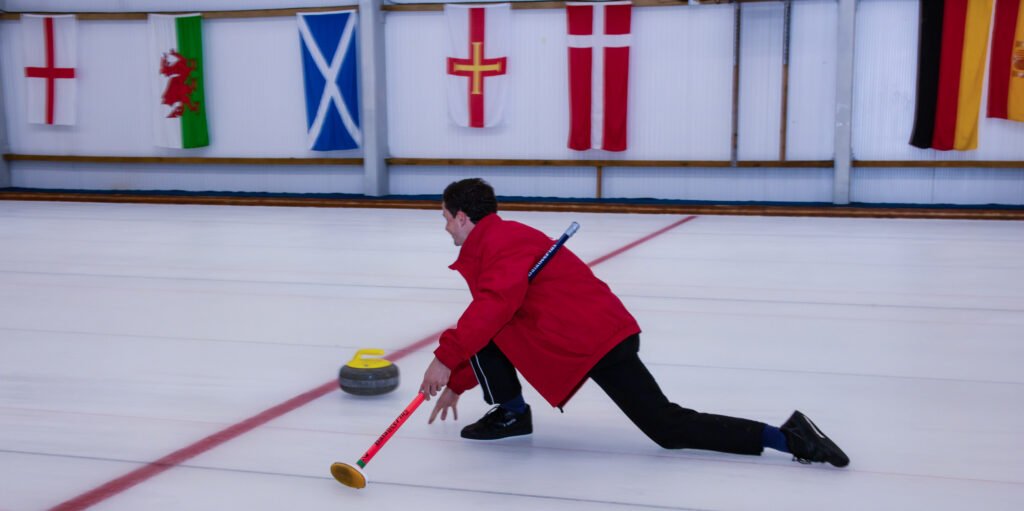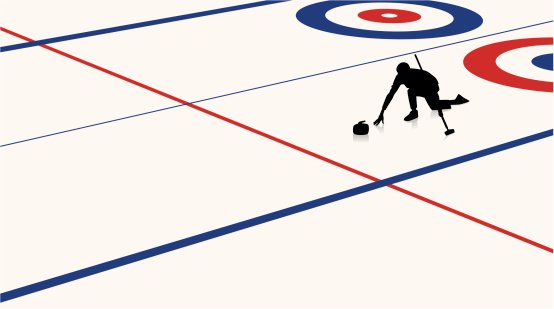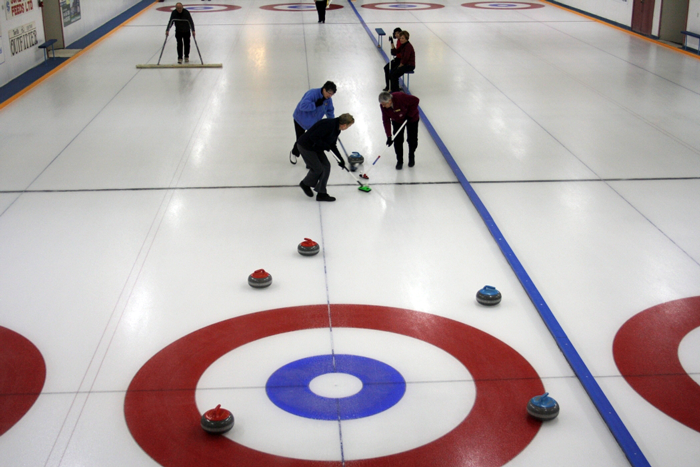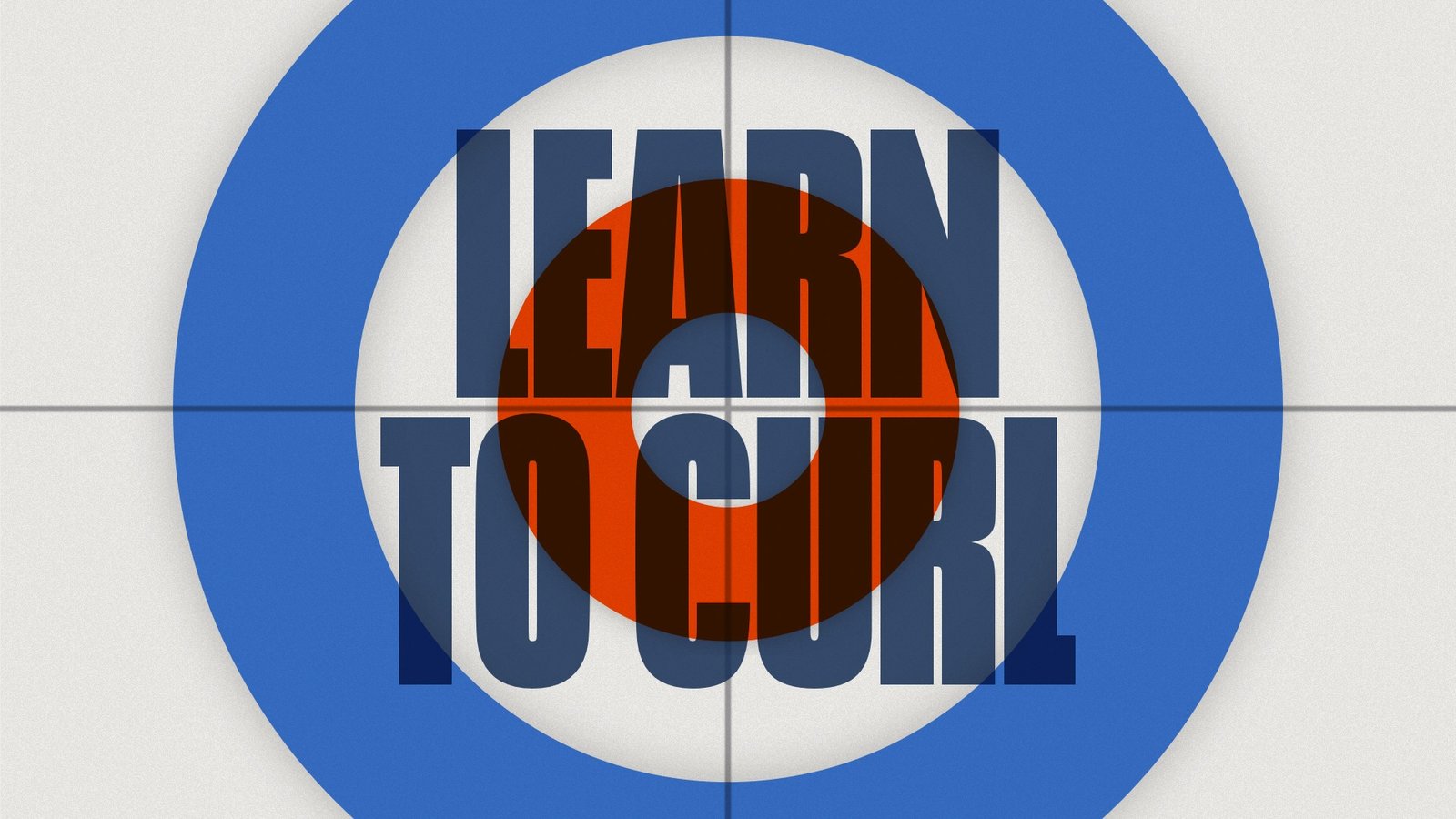There are two hog lines on every sheet of curling ice, with one 10 meters from the hack at each end. These thick lines span the width of each sheet, and split the ice into three distinct sections. At the throwing end, players must let go of their stone before they reach the hog line. While lights and sensors are used in top level competitions to distinguish whether or not a player has let go in time, at club level this is done on the honour system in the “Spirit Of Curling”. If a player doesn’t release the stone before they cross the hog line, it is removed from play.

In the picture above, you can see clearly that the player has released their stone before reaching the hog line. It is ok for the player to slide through the hog line, as long as they have let go and are now just watching or shouting instructions! Once the thrower has come to a stop, they should move to the side of the sheet so that the other team can prepare for their shot.
During a shot, players on the team that are not throwing should stand still along the side of the sheet somewhere between the hog lines. This is so that they are not obstructing the throwing team, or distracting them during the delivery. Of course, one player will be skipping and will likely be on the backboard, but out of courtesy the other 3 players should use the hog lines as a reminder to give space to their opponents.

Furthermore, a stone can only remain in play if it crosses the hog line at the far end of the sheet. For this to count, the stone must be all the way over the hog line, and not overlapping in any way. Sweepers can really make a difference here, huffing and puffing to get a light stone over the hog line and into a guard position. However, if a stone doesn’t quite make it over the hog line then it is considered a “hogged stone” and is removed from play. This can be incredibly frustrating if it is a matter of millimetres, so if in doubt it is usually best to sweep!

So the hog lines are very important for all players to understand. The thrower needs to release their stone before the first hog line, and the sweepers need to make sure it gets over the second hog line. After the shot, they will then need to stand still between the hog lines to allow the other team to take their turn without distraction.
For more on curling terminology, visit our glossary page!
Hopefully you might like to come and give curling a try.
For a one-off session, visit our Try Curling page to book a two hour session for yourself, or bring friends and family.
Alternatively, you could book a place on one of our Learn To Curl courses which run over a series of 4 weekly two hour sessions.


